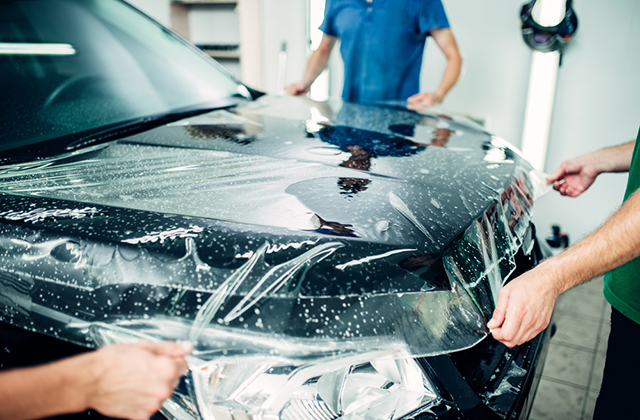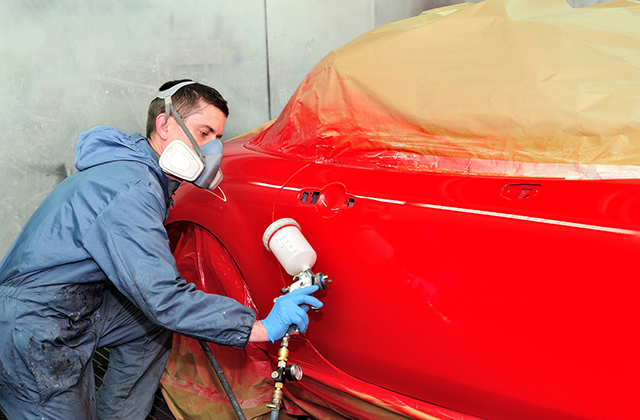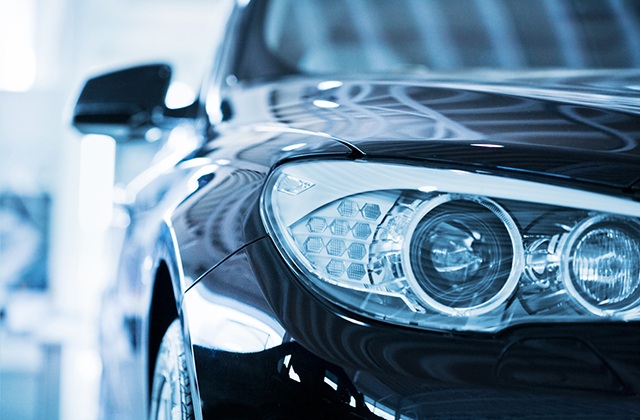Car covers provide a great means for protecting your prized possession. I will explain here car cover pros and cons, as well as describe the primary types of covers and fabrics. Car paint protection is a great way to maintain your vehicle’s prime condition, preventing scratches, chips, fading, rusting, and dings from road debris, rocks, and pebbles.
DO YOU NEED A COVER?
If you store your car outside, the advantage of having a car cover can easily be seen. A cover will protect your car’s paint finish and interior from harmful ultraviolet rays. It will also protect the paint from the acidity of bird droppings that can quickly eat through the finish. Tree sap, leaves, and other pollutants also can stain or even ruin the paint. To repair the damage can be very time consuming, and possibly very expensive, depending on the extent.
If you store your car indoors, a cover will provide protection against dust and minor abrasions from foot traffic. Thicker and heavier fabrics generally provide better abrasion resistance. Delicate paint finishes are best protected by cotton fabrics, although there are some synthetic materials that can provide similar softness characteristics.
SO MANY FABRICS – SO FEW CARS!
The variety and array of cover fabrics can confound even an experienced textile professional. Listed below is a brief description of the three general categories used in manufacturing substrates with pros and cons.
WOVEN
Woven fabrics are stronger (greater tear strength) and more durable than bonded or non-woven fabrics. These fabrics are manufactured on high speed looms with yarns that run both vertically and horizontally. The yarn size and density (count) can vary depending on the fabric design and specifications. Woven fabrics usually fold and store compactly. They can be comprised of natural or man-made fibers that are often coated or treated for mildew, water and ultraviolet light protection.
NON-WOVEN
These fabrics are usually comprised of polymer fibers (polyolefins) that are compressed together under high heat or with adhesives. These fabrics are usually thicker than wovens and warp knits but offer less tear strength and durability. The added thickness can provide excellent abrasion resistance. However, the additional bulk can prove to be more cumbersome. The properties inherent in these fabrics usually provide good to excellent water, mildew and ultraviolet light protection.
WARP KNITS
Warp knit fabrics are manufactured on flat knitting machines that can resemble looms used for weaving. The fabrics are usually comprised of polyester or nylon yarns that run the length of the fabric to form interlocking loops. The yarn size and density (count) can vary depending on the fabric design and specifications. Warp knit fabrics usually fold and store compactly. They have excellent tear strength as well as water, mildew, and ultraviolet light resistance.
A FEW CAVEATS AND PRACTICAL TIPS
There are some things that need to be considered before purchasing a car cover. For example, most outdoor covers will repel a considerable amount of rain but will not keep the car completely dry. A cover must be breathable to allow the paintwork to breathe properly. If the cover material is not breathable, it can suffocate the paint which will cause it to discolor or possibly peel. Since air is able to pass through the cover, it is likely that water will eventually also work its way through the fabric to the paint. Even if it does not, during rapid temperature changes, condensation will form on the paintwork. However, a breathable cover material will allow the condensation or any rain water to evaporate, preventing damage to the paintwork.
Even the best outdoor cover is no substitute for a garage; however, a quality well fitted cover can protect a vehicle from the elements adding many years of life to the paintwork/convertible top and interior. Routine maintenance is also made much easier with the regular use of a cover.
If you will be removing your cover shortly after/during a rain storm, be prepared to deal with a very wet cover – some fabrics will retain much more water than others. If you do not have a place to let the cover dry, place it in a large bin or plastic bag until the weather conditions become more favorable. Allow the cover to air dry as soon as possible.
During winter months, if water forms on the paint surface and the temperature suddenly drops, the cover may freeze to the car. Allow time for the sun or rising temperatures to loosen the material before removing the cover.
Indoors, a cover can provide needed protection by diverting wandering eyes in public garages or preventing minor scrapes or scratches in private residences. Fabrics made from 100% cotton provide the ultimate in softness and protection for indoor use. Polyester/cotton blends, and some synthetic fabrics, can also provide excellent indoor protection while being suitable for occasional outdoor use.
Car covers can typically be washed in a home washing machine. More bulky covers should be washed in a commercial machine. Always wash in cold water with mild soap. Hot water and strong detergents can shrink and damage most covers. Additionally, a cover should always be hung to air dry. The high heat from a home or commercial dryer will damage most covers.
HOW TO PURCHASE A COVER
There are several variables to consider before making your selection
including:
Your Budget – This may limit your choices. For example, universal covers can provide good to excellent protection on a limited budget provided one is selected that fits properly. (An outdoor cover that is too loose can cause damage from the excess material flapping against the paint in the wind.) On the other end of the spectrum, some high-end
custom covers are made with soft, durable fabrics that provide an excellent fit with superior protection.
Indoor Or Outdoor Storage — Outdoor cover fabrics typically have water and ultraviolet light protection which makes them ideally suited toward harsh outdoor conditions. Although indoor cover fabrics are often safe for occasional outdoor use, their exposure should be limited.
Fabric Selection — Once you have determined your budget and identified how and where the cover will be used, it is time to select a fabric type. When phoning/visiting a retailer or manufacturer ask for fabric samples. There is no better way to compare fabrics than to see and feel them. Additionally, this will eliminate any questions or concerns regarding the quality and weight of the fabric to be purchased.
Although the purchase of a quality cover will require some preparation and fact finding, a properly selected cover can provide years of hassle free protection for your vehicle. It will reduce the amount of time needed for exterior maintenance, extend the life of the paint and trim components, as well as enhance the overall appearance of the vehicle.
Author:
Michael Trueba Jr
President
MPT Industries
Auto Chic
Phone: 973-989-9220
E-mail: mtrueba@mptindustries.com
Michael Trueba Jr has been president of MPT Industries, a manufacturer of custom vehicle covers and specialty lubricants, for over 20 years. Michael has over 25 years expenerince with textiles in a variety of industries and has performed undergraduate studies in Textile Technology and Textile and Apparel Marketing, as well as graduate studies in Finance.
E-mail: mtrueba@mptidustries.com
Web: http://www.mptindustries.com
Article Source: http://EzineArticles.com/expert/Michael_Trueba_Jr/209977
Article Source: http://EzineArticles.com/1475172



